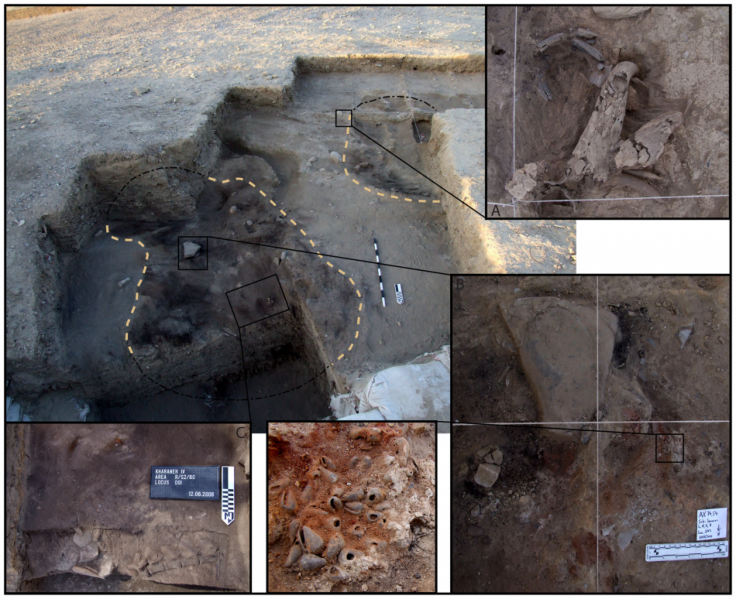Prehistoric Huts of Hunter-Gatherers Discovered in Jordan, Archaeologists Wonder How Humans Lived 20,000 Years Ago

Structural remains of two prehistoric huts found in eastern Jordan provide new insights into how humans lived 20,000 years ago. Photo Credit: Lisa A. Maher, Department of Anthropology, University of California
Archaeologists have discovered ruins of two huts at Kharaneh IV, one of the largest Late Pleistocene sites in southwest Asia, located about 70 km east of Jordan's capital Amman. Excavators are trying to find new perspectives about human settlements with the latest find.
The findings, published in the Feb. 15 issue of the journal PLoS One, suggest that the structural remains are about 20,000 years old, nearly 10,000 years before the Neolithic farmers settled in permanent villages and are located at a hunter-gatherer settlement of the Epipalaeolithic Period, which is marked by stone-built houses and more advanced tools.
Supposed to be the oldest building found in Jordan, the huts provide new insight into the culture, lifestyle and human inhabitation during the period, and also help chart the development of architecture in the region, prolonged site occupation and evolving village life, according to the archaeologists.
“Exceptionally dense and extensive occupational deposits exhibit repeated habitation over prolonged periods, and contain structural remains associated with exotic and potentially symbolic caches of objects (shell, red ochre, and burnt horn cores) that indicate substantial settlement of the site,” authors of the research wrote.
The excavation, funded by the Arts and Humanities Research Council of Britain, also unearthed staggering concentration of stone tools and animal bones that reinforce earlier claims that the site of Kharaneh IV was frequented by hunter-gatherer groups and was occupied for longer duration.
The two excavated huts are oval in plan, measuring 3.2 by 2.2 meters and layered with dark-stained and organic-rich sediments, mainly charcoal fragments. Archaeologists said that only further excavation would help them analyze the significance of the huts’ architecture. Hardly two meters apart, both huts were also found with several interesting features, the researchers added.
“There are two distinct chipped stone concentrations or caches, each of which contains at least one core and several narrow, gracile bladelets and associated knapping debris (chips, core trimming flakes and blades). One of these caches also contained a bone point. There are also three large chunks of flint that have been extensively burned and are thermally fractured,” concluded the researchers.
© Copyright IBTimes 2024. All rights reserved.











